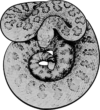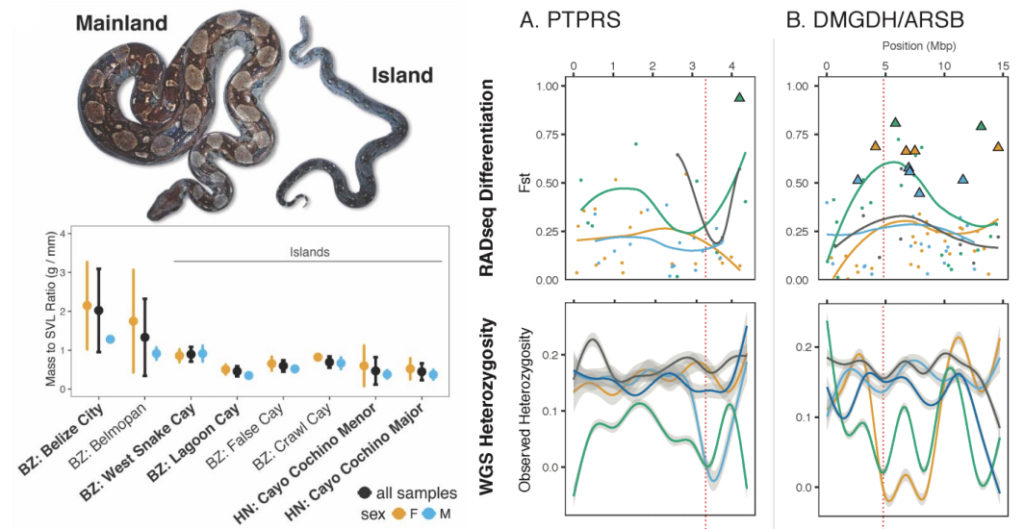Our new paper is now online at Genome Biology and Evolution! Using both high density RADseq and whole-genome resequencing data, we infer three dwarf island populations of Boa constrictor with independent origins, and identify a suite of genes involved in growth, metabolism, and craniofacial morphology that may underly the unique dwarf phenotypes on these islands.
Congratulations to Daren and all co-authors!
Card, D.C., R.H. Adams, D.R. Schield, B.W. Perry, A.B. Corbin, G.I.M. Pasquesi, K. Row, J.M. Daza, W. Booth, C.E. Montgomery, S.M. Boback, and T.A. Castoe. 2019. Genomic basis of convergent island dwarf phenotypes in boa constrictors. Genome Biology and Evolution. PDF
Abstract
Convergent evolution is often documented in organisms inhabiting isolated environments with distinct ecological conditions and similar selective regimes. Several Central America islands harbor dwarf Boa populations that are characterized by distinct differences in growth, mass, and craniofacial morphology, which are linked to the shared arboreal and feast-famine ecology of these island populations. Using high-density RADseq data, we inferred three dwarf island populations with independent origins and demonstrate that selection, along with genetic drift, has produced both divergent and convergent molecular evolution across island populations. Leveraging whole genome resequencing data for 20 individuals and a newly annotated Boa genome, we identify four genes with evidence of phenotypically-relevant protein-coding variation that differentiate island and mainland populations. The known roles of these genes involved in body growth (PTPRS, DMGDH, and ARSB), circulating fat and cholesterol levels (MYLIP), and craniofacial development (DMGDH and ARSB) in mammals link patterns of molecular evolution with the unique phenotypes of these island forms. Our results provide an important genome-wide example for quantifying expectations of selection and convergence in closely related populations. We also find evidence at several genomic loci that selection may be a prominent force of evolutionary change – even for small island populations for which drift is predicted to dominate. Overall, while phenotypically convergent island populations show relatively few loci under strong selection, infrequent patterns of molecular convergence are still apparent and implicate genes with strong connections to convergent phenotypes.

